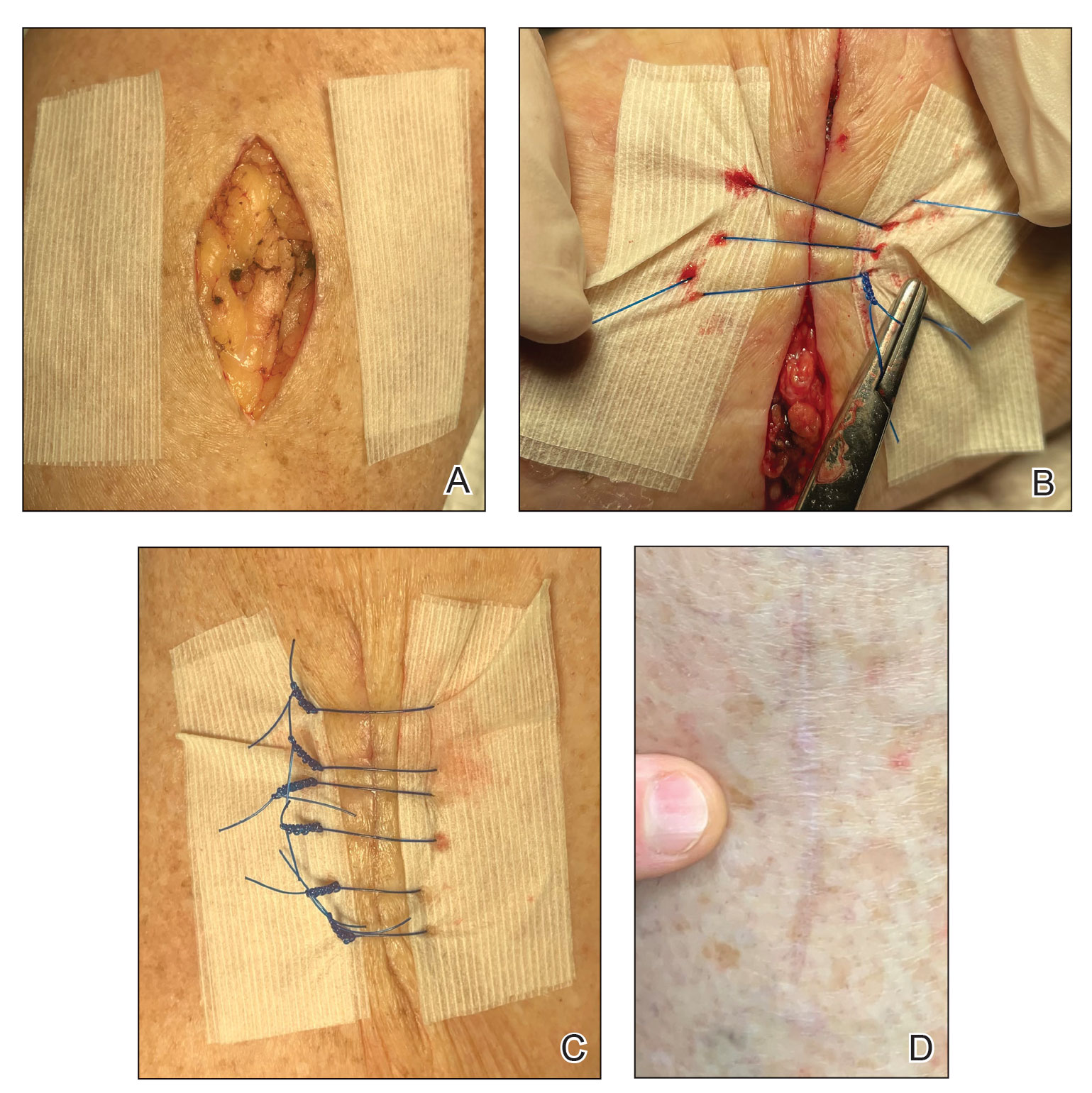Complications
Most outcomes after using this technique are typical of optimized linear surgeries, with reduced scarring and complete wound healing (Figure, D). We seldom see complications but the following are possible:
• Bleeding occurs but rarely; the weeklong wrap likely provides great benefit.
• Infection is rare but does occur occasionally, as in any surgical procedure.
• Breakdown of the entire wound is rare; however, we occasionally see focal necrosis near 1 stitch—or rarely 2 stitches—that does not require intervention, apart from longer use of topical Polysporin or petrolatum alone to maximize healing by secondary intention in those small areas.• Despite simple suture placement far from the edge of the wound, wound inversion is seldom a problem because these taut closures have a tendency to expand slightly due to postoperative swelling.

A, A typical ellipse following skin excision. In the initial setup, 2 layers of reinforced skin closure strips are placed parallel to the defect, approximately 1 cm from the edge of the wound. B, A double-pulley suture is tied while a single suture is placed. Use the double-pulley suture to bring the wound edges together. Place a single suture interior to the double-pulley suture, then gently tie the single suture. C, For final wound closure, linear sutures pass through the reinforced skin closure strips, which provide added strength to the repair. D, Wound healing is typical of optimized linear repairs, with a faint linear scar remaining after healing.
Practice Implications
Any experienced dermatologic surgeon can perfect this technique for closing a wound in thin skin. Because wound closure in areas of fragile skin frequently is encountered in cutaneous surgery, we hope that utilizing this technique results in an optimal outcome for many patients.

